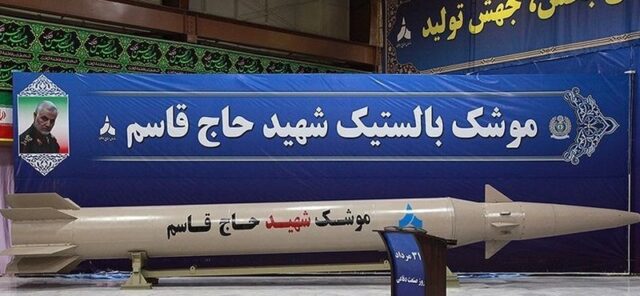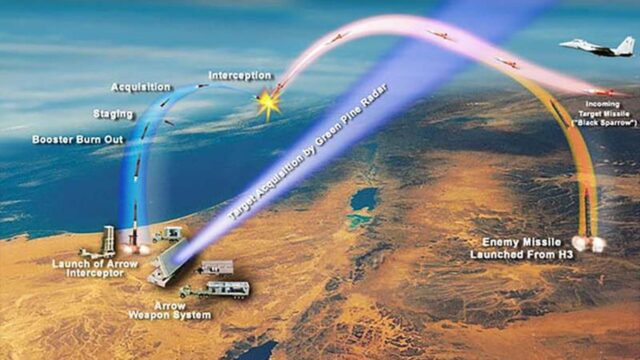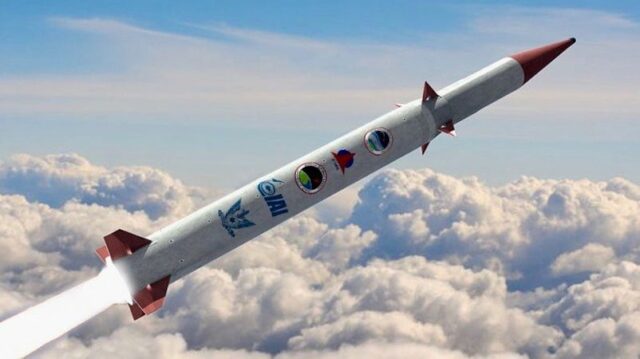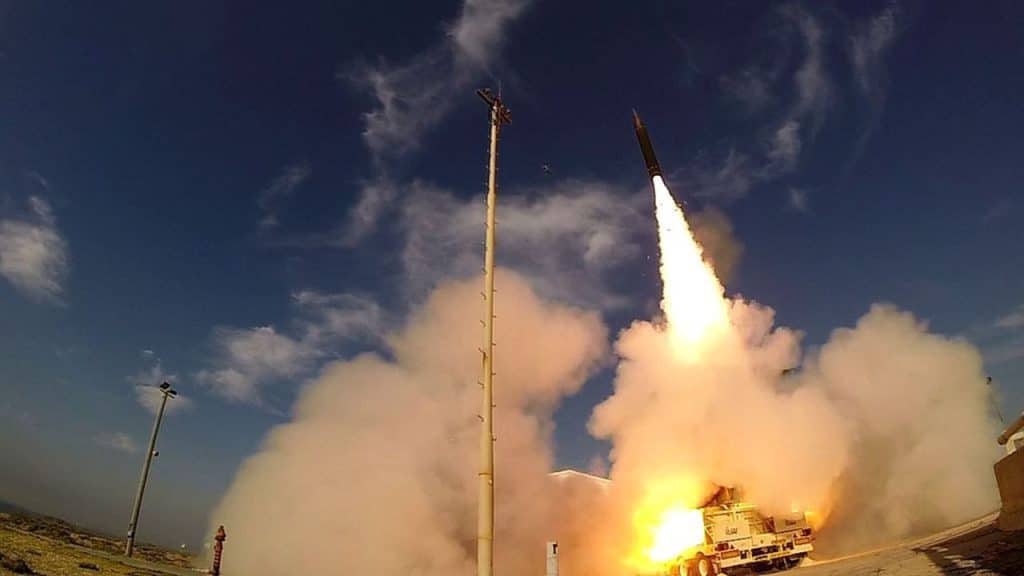Breaking Defense reported on November 15 that Jerusalem has accelerated work on the development of the Strzała 4 (Chec 4) anti-aircraft system. The work will be coordinated by the Missile Defense Directorate of the Israeli Defense Ministry. The project was to receive funding mainly from special budgets dedicated to the need to deal with a critical threat. It is nothing more than the Iranian ballistic missile development program, which is treated as an existential threat to Israel.
The emerging information about the new version of the Arrow is almost certainly a response to press mentions about the newly developed Iranian hypersonic ballistic missile. It should be noted that this is completely unconfirmed news, but is of vital interest to the Israeli and US intelligence community. For the time being, both are cautious in passing judgments that such a system was created at all and poses a significant threat. The Pentagon is aware of such reports, but remains skeptical.
“As always, we will refrain from disclosing intelligence reports and assessments on such sensitive topics,” said Pentagon Deputy Spokesperson Sabrina Singh. “We continue to closely monitor Iran’s development and proliferation of missiles and related technologies.
The Israel Missile Defense Organization and the US Missile Defense Agency have begun the development of the Arrow-4 system, with @ILAerospaceIAI as the prime contractor for development and production 1/2 pic.twitter.com/emLWMjlmI7
— Ministry of Defense (@Israel_MOD) February 18, 2021
Tehran maintains that any emerging news that questions the missile’s existence is false. In an interview with the Tasnim news agency, the head of aviation of the Islamic Revolutionary Guard Corps, Brigadier General Amir Ali Hajizade, said on November 11 that the hypersonic missile has already passed its first tests and its presentation will take place in the near future.
“The missile has a high velocity and can maneuver both in and out of Earth’s atmosphere,” Hajizade said. “The new missile can penetrate all missile defense systems, and I don’t think missiles capable of intercepting it will be developed in the coming decades.
If this is true – and there is no indication beyond Hajizadegp’s words that it is – the weapon would prove to be more dangerous than the Sejil medium-range ballistic missile, considered a first-strike weapon against Israel. Iran says Sejil could reach Tel Aviv in less than seven minutes if launched from Natanz in the central part of the country. A hypersonic missile traveling at Mach 5 would be able to hit much faster, potentially in four minutes. The complicated flight trajectory makes it difficult to defend against such missiles and makes it impossible to predict the point of impact, unlike classic ballistic missiles.
#Iran | In less than 4 minutes, Iranian hypersonic missiles reach Israel.
The Sejil missile can reach Tel Aviv in less than seven minutes if launched from Natanz. However, this hypersonic missile, which is much more sophisticated than the Sejil, pic.twitter.com/KkPM3SLEwG— Zulfikar Ali (@ZulfikarAli514) November 13, 2022
It is worth noting, however, that not so long ago Iranian specialists and military technicians developed the Shahid Haj Ghasem ballistic missile (in honor of General Soleimani, murdered by the Americans). The declared speed of the missile is Mach 12, the range is 1,400 kilometers, and the weight of the warhead is to be 500 kilograms. According to Iranian state media, the missile successfully passed the tests and meets the requirements set for it.
Iran’s military nuclear program is generally the focus of the Israeli intelligence apparatus, but in recent months Iran’s track record in developing ballistic and now hypersonic missiles has taken a higher priority. Israeli intelligence confirmed that the latter were on Tehran’s wish list and assessed that Iran was trying to obtain the relevant technology, especially from North Korea. According to Tal Inbar, an Israeli defense analyst, the new missile will have a shape similar to known systems: the Chinese DF-17 or the Hwasong-8 hypersonic glide vehicle, which was tested by the DPRK military in January this year.

Shahid Haj Ghasem revealed in August 2020.
(Tasnim News)
This information was enough for the Israel Defense Forces to be safe. The military wants to be ready: when a new means of air attack comes along, there should be a solution on the shelf that you just need to reach for. Efforts to develop measures to counter this potential new threat have accelerated over the past two months.
But only seemingly new, as the Israeli Missile Defense Organization and the American Missile Defense Agency began formal cooperation on the Chec 4 anti-aircraft system as early as February 2021, indicating that the main threat is Iranian ballistic missiles, which may eventually be armed with nuclear warheads. The joint statement can be considered the formal start of research and development, but the first activities started long before that date. In 2017, it was reported that challenges and threats were being formulated that the next development version of the anti-ballistic missile system was to deal with.
“The development of the Chec 4 system together with American partners will result in a technical and operational leap, preparing Israel for the challenges of the future battlefield and evolving threats in the Middle East and beyond,” Israeli Defense Minister Beni Ganc said in February 2021.

The Chec 3 system includes e.g. ELM-2080S Super Green Pine radar, Golden Citron combat control center and Brown Hazelnut launch control system.
(Missile Defense Agency)
The details of the work are covered by the highest secrecy clause. Defense ministry sources say the focus is primarily on helping the local defense industry develop better sensors and early warning systems that are designed to intercept long-range missiles, including hypersonic missiles.
Israel Aerospace Industries was chosen as the technological and industrial leader. In the division of tasks, IAI also received the construction of a new effector. The command and fire control system will be developed by Elbit Systems, which has experience in this field from other components of the Israeli multi-layer air defense. Chec 4 will be an evolutionary development of the existing Chec 2 and Chec 3 systems, and over time it will displace the former from use. Chec 2 entered service in 2000; Chec 3 is very young compared to them, it appeared in service in 2017.

Vision of the Chec 4 missile.
(IAI)
Chec 3 is designed to intercept medium/long-range ballistic missiles in the final phase of the flight. A two-stage interceptor missile with an EKV (Exo-atmospheric Kill Vehicle) kinetic warhead strikes a target outside the atmosphere (more than 100 kilometers), which provides an additional degree of safety for nuclear, biological or chemical warheads. Chec 4 will have similar characteristics.
Research and development is one thing, but testing and achieving operational readiness, i.e. confirming Chec 4’s ability to knock down enemy hypersonic missiles, is quite another. Israeli experts who follow Iran’s long-range missile program believe that if the Iranians really succeeded in developing a working hypersonic missile, they could use Houthi allied rebels to attack Israeli targets. Therefore, Jerusalem believes that not only domestic efforts are necessary to develop an effective anti-aircraft system. Operational cooperation between Cahal and the US troops in the Persian Gulf region is also important.
See also: On the cart and under the cart at the same time – prospects for the US defense industry
US Department of Defense

